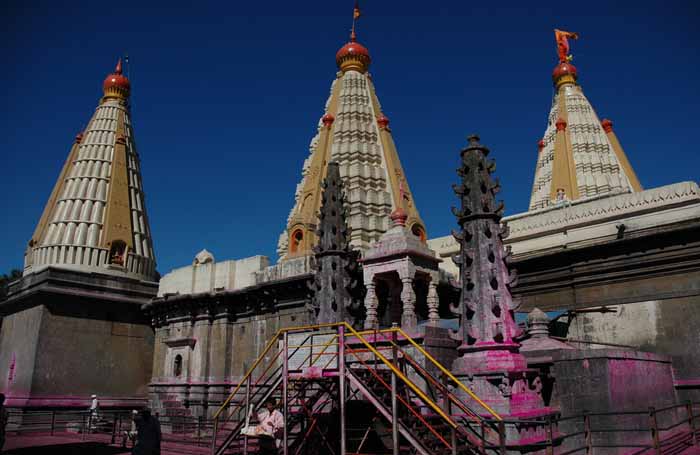Jyotiba Temple

Information of Jyotiba Temple, Kolhapur, Maharashtra
The Jyotiba Temple is one of the distinct and sacred places of western India. It was established in the district of Kolhapur near the Ratangiri Wadi (valley) of Maharashtra. The temple is dedicated to the deity of Lord Jyotiba. The temple is at an elevation of about 330 metres above the sea level. It is believed that the body of Lord Jyotiba is formed from the mixture of three souls namely, the Brahma, the Vishnu and the Shiva. The location of this temple is covered by dense forest and mountains.
Jyotiba Temple Religious Significance
The idol of god Jyotiba is believed as the guardian of the local inhabitants. It is also believed that the presence of the god Jyotiba can be felt by the most devoted followers of him. Deities including that of Lord Jyotiba and other gods present in this temple are worshipped three times everyday by the local priests. However, the temple is not at all crowded for all the days in a week except Sunday. Sunday is regarded as the main worshipping day of Lord Jyotiba. True followers of the god will never return empty-handed from this temple as suggested by the local people. The temple is also one of the 12 Jyotirlingas present in Maharashtra. So, it is also named as the Kedarnath. The months of Chaitra and Vaishakh (summer months) are religious for this temple. The full moon days of these two months are greatly observed here. A fair is organized for the visitors in the day of Chaith Shukla that consist of several cultural, religious and traditional activities. That day is celebrated by smearing vermillion (gulal) on each other. As a result of that the whole mountain is painted pink.
Jyotiba Temple Mythology & History
Two destructive demons Raktabhoj Rakshasa and Ratnasur Rakshasa once existed in this region. They mercilessly killed and destroyed innocent citizens. Threatened by their fear, people had no other option but to pray for their lives. Brahma appeared and understood their deprived condition. He along with Lord Vishnu and Lord Shiva created a super power by mixing up their souls. The superpower was created to fight out those two Rakshasa. Finally, the war started and the two demons were badly defeated in the hands of that superpower. That super power was termed as the Lord Jyotiba. From then, people started worshipping him. He then started his kingdom atop this hill and as a result the temple was created.
In another story it was depicted that Lord Jyotiba in the form of superpower helped goddess Mahalaxmi to fight with the demons of this region. For this reason people formed a Jyotirlinga and started worshipping him on it. It was believed that he was born in a Nath culture family. Vimalmbuja and Pougand were the names of his parents.
Jyotiba Temple Architectural Significance
The temple of Jyotiba represents some eye-catching architectural features that automatically attract the visitors. Though the prime temple was built by Navji Saya but the actual credit for this beautiful structure goes to Ranoji Shinde. He constructed the present monument in 1730. The shrine along with the roof spire stands at a massive height of about 57 ft x 37 ft x 77 ft. Two other temples namely the Kedareshwar Temple and the temple of Ramling are situated just beside the first temple. The structure of Kedareshwar was brought up under the guidance of Daulatrao Shinde in 1808 and the credit for establishing the monument of Ramling goes to Malji Nilam Panhalkar in 1780.
- Andhra Pradesh Temples
- Assam Temples
- Bihar Temples
- New Delhi Temples
- Goa Temples
- Gujarat Temples
- Jammu and Kashmir Temples
- Karnataka Temples
- Kerala Temples
- Madhya Pradesh Temples
- Maharashtra Temples
- Odisha Temples
- Punjab Temples
- Rajasthan Temples
- Sikkim Temples
- Tamil Nadu Temples
- Telangana Temples
- Uttar Pradesh Temples
- Uttarakhand Temples
- West Bengal Temples